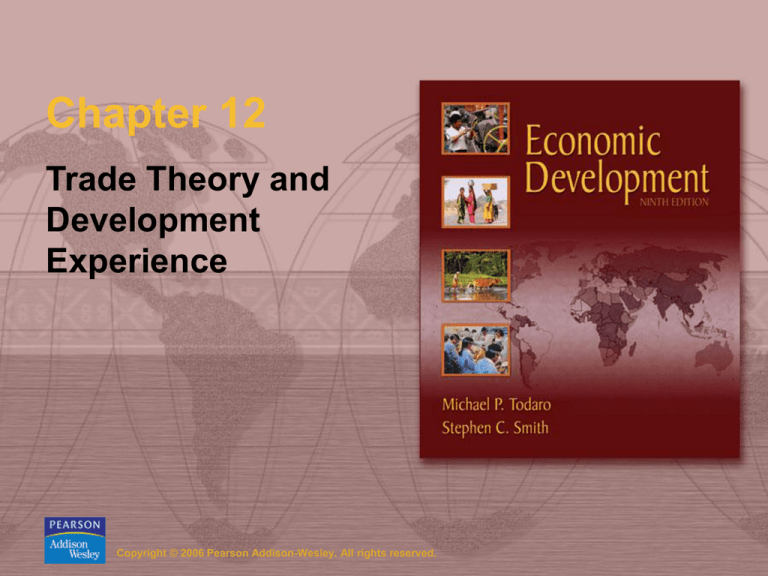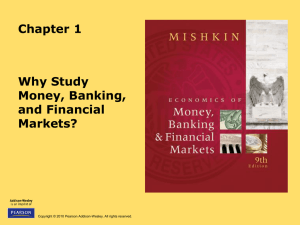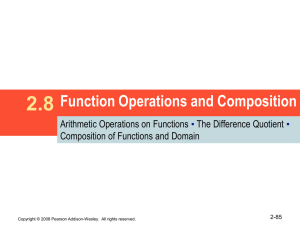
Chapter 12
Trade Theory and
Development
Experience
Copyright © 2006 Pearson Addison-Wesley. All rights reserved.
International Trade and Finance:
Some Key Issues
Many LDCs rely heavily on exports (usually
primary products)
Many LDCs also rely heavily on imports
(typically of machinery, capital goods,
intermediate producer goods, and consumer
products)
Copyright © 2006 Pearson Addison-Wesley. All rights reserved.
12-2
Table 12.1
Copyright © 2006 Pearson Addison-Wesley. All rights reserved.
12-3
Five Basic Questions about Trade
and Development
How does international trade affect
economic growth?
How does trade alter the distribution of
income?
How can trade promote development?
Can LDCs determine how much they trade?
Is an outward-looking or an inward-looking
trade policy best?
Copyright © 2006 Pearson Addison-Wesley. All rights reserved.
12-4
The Importance of Trade for
Development
LDC exports: trends and patterns
(see Table 12.2)
Importance of exports to developing nations
Copyright © 2006 Pearson Addison-Wesley. All rights reserved.
12-5
Table 12.2
Copyright © 2006 Pearson Addison-Wesley. All rights reserved.
12-6
The Importance of Trade for
Development
LDC exports: trends and patterns
Importance of exports to different
developing nations
Demand elasticities and export earnings
instability
Copyright © 2006 Pearson Addison-Wesley. All rights reserved.
12-7
The Terms of Trade and the
Prebisch-Singer Thesis
Total export earnings depend on:
– Total volume of exports sold AND
– Price paid for exports
Prebisch and Singer argue that export prices fall
over time, so LDCs lose revenue unless they can
continually increase export volumes
Prebisch and Singer think LDCs need to avoid a
dependence on primary exports
Copyright © 2006 Pearson Addison-Wesley. All rights reserved.
12-8
The Traditional Theory of
International Trade
The principle of comparative advantage
Relative factor endowments and
international specialization: the Neoclassical
model
Copyright © 2006 Pearson Addison-Wesley. All rights reserved.
12-9
Figure 12.1
Copyright © 2006 Pearson Addison-Wesley. All rights reserved.
12-10
The Traditional Theory of
International Trade
The principle of comparative advantage
Relative factor endowments and
international specialization: the Neoclassical
model
Trade theory and development: the
traditional arguments
Copyright © 2006 Pearson Addison-Wesley. All rights reserved.
12-11
Some Criticisms of Traditional Free-Trade
Theory in the Context of DevelopingCountry Experience
Six assumptions of the Neoclassical model
must be scrutinized:
Copyright © 2006 Pearson Addison-Wesley. All rights reserved.
12-12
The Six Assumptions
The following assumptions of the
Neoclassical model must be scrutinized:
– Fixed resources, full employment, and
international factor immobility
– Fixed, freely available technology and
consumer sovereignty
– Internal factor mobility and perfect competition
– Governmental non-interference in trade
Copyright © 2006 Pearson Addison-Wesley. All rights reserved.
12-13
The Six Assumptions (cont’d)
– Balanced trade and international price
adjustments
– Trade gains accruing to nationals
Copyright © 2006 Pearson Addison-Wesley. All rights reserved.
12-14
Figure 12.2
Copyright © 2006 Pearson Addison-Wesley. All rights reserved.
12-15
Some Conclusions on Trade Theory
and Economic Development Strategy
Trade can lead to rapid economic growth under
some circumstances
Trade seems to reinforce existing income
inequalities
Trade can benefit LDCs if they can extract trade
concessions from developed countries
LDCs generally must trade
Regional cooperation may help LDCs
Copyright © 2006 Pearson Addison-Wesley. All rights reserved.
12-16
Figure 12.3
Copyright © 2006 Pearson Addison-Wesley. All rights reserved.
12-17
Concepts for Review
Absolute advantage
Balanced trade
Barter transactions
Capital account
Collective self-reliance
Collusion
Commodity terms of
trade
Copyright © 2006 Pearson Addison-Wesley. All rights reserved.
Comparative
advantage
Current account
Enclave economies
Export dependence
Export earnings
instability
Factor endowment
trade theory
12-18
Concepts for Review (cont’d)
Factor mobility
Factor-price
equalization
Foreign-exchange
earnings
Free trade
Gains from trade
Globalization
Growth poles
Copyright © 2006 Pearson Addison-Wesley. All rights reserved.
Income elasticity of
demand
Income terms of trade
Increasing returns
Industrial policy
Monopolistic market
control
12-19
Concepts for Review (cont’d)
North-south trade
models
Oligopolistic market
control
Prebisch-Singer thesis
Price elasticity of
demand
Primary products
Copyright © 2006 Pearson Addison-Wesley. All rights reserved.
Product cycle
Product differentiation
Quotas
Regional trading
blocks
Returns to scale
Risk
Specialization
12-20
Concepts for Review (cont’d)
Subsidies
Synthetic substitutes
Tariffs
Trade deficits
Copyright © 2006 Pearson Addison-Wesley. All rights reserved.
Uncertainty
Vent-for-surplus theory
of international trade
12-21







